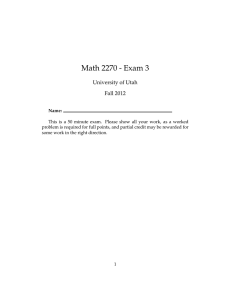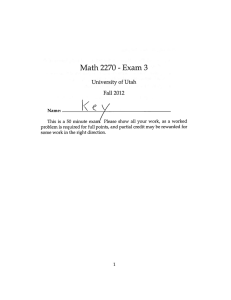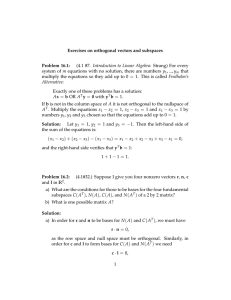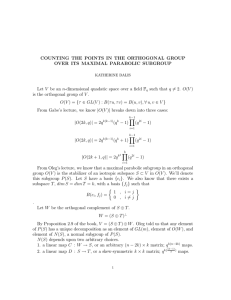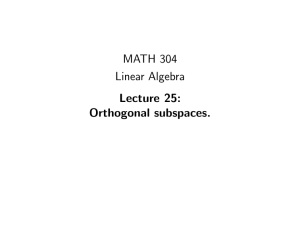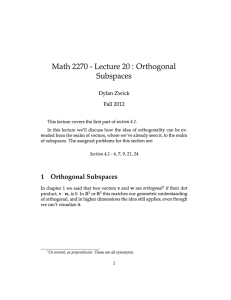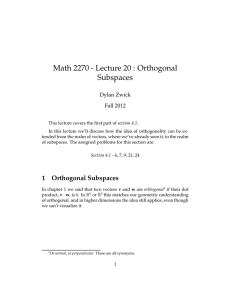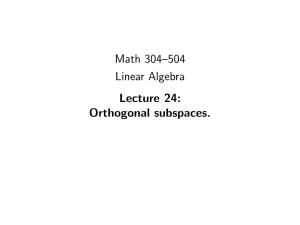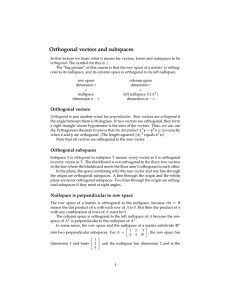Highlights Math 304 Reinterpretation of matrix multiplication Rank-nullity revisited
advertisement
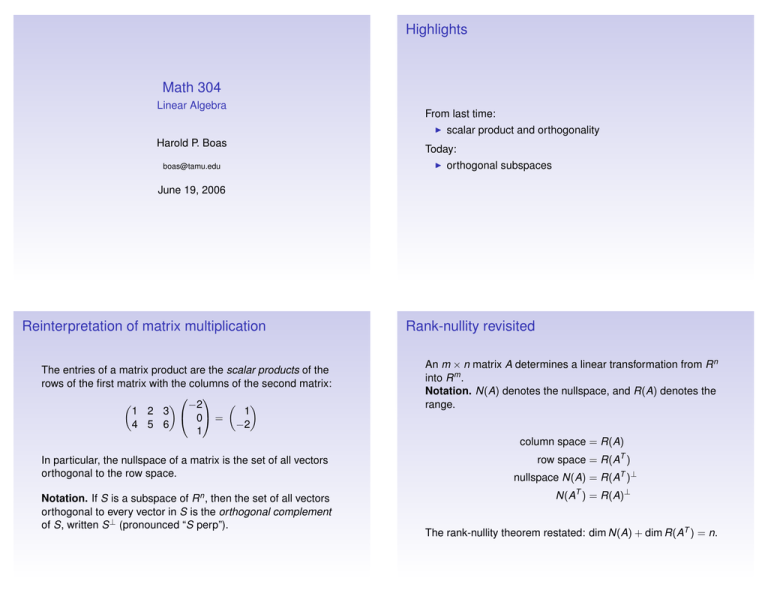
Highlights Math 304 Linear Algebra From last time: I Harold P. Boas boas@tamu.edu scalar product and orthogonality Today: I orthogonal subspaces June 19, 2006 Reinterpretation of matrix multiplication The entries of a matrix product are the scalar products of the rows of the first matrix with the columns of the second matrix: −2 1 1 2 3 0 = −2 4 5 6 1 Rank-nullity revisited An m × n matrix A determines a linear transformation from R n into R m . Notation. N(A) denotes the nullspace, and R(A) denotes the range. column space = R(A) In particular, the nullspace of a matrix is the set of all vectors orthogonal to the row space. Notation. If S is a subspace of R n , then the set of all vectors orthogonal to every vector in S is the orthogonal complement of S, written S ⊥ (pronounced “S perp”). row space = R(AT ) nullspace N(A) = R(AT )⊥ N(AT ) = R(A)⊥ The rank-nullity theorem restated: dim N(A) + dim R(AT ) = n. Orthogonal subspaces in general If S is any subspace of R n , and S ⊥ is the orthogonal subspace, then I (S ⊥ )⊥ = S I dim S + dim S ⊥ = n I Rn = S ⊕ S⊥ The notation ⊕, called direct sum, means that every vector in R n can be written in a unique way as a sum of an element of S and an element of S ⊥ . Application. If A is an m × n matrix, then R n = N(A) ⊕ R(AT ) and A maps the row space R(AT ) one-to-one onto the column space R(A).
